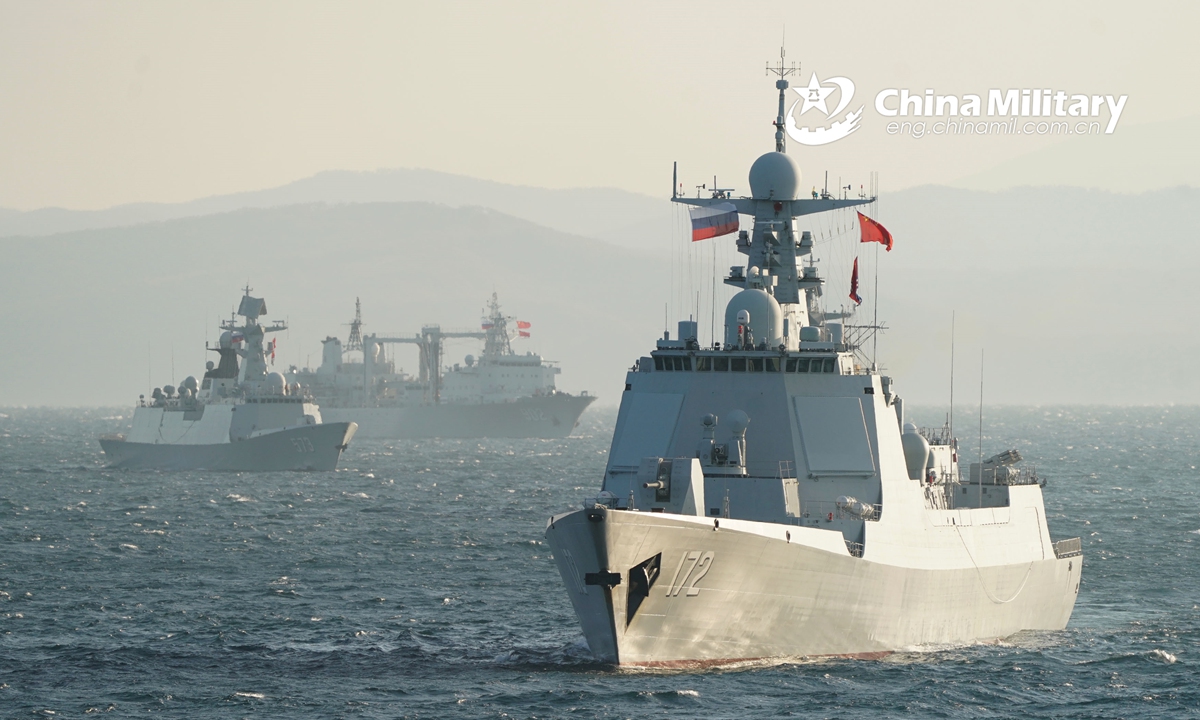The Japanese defense ministry has said that a total of seven warships from both China and Russia cruised between Japan’s Izu islands on September 26-27. This maneuver is a part of China and Russia’s ongoing coordinated patrol operations in the Pacific Ocean.
US Is Retiring ATACMS That Ukraine Is ‘Begging’ From Pentagon; Will US Arm Kiev With Precision Strike Missile?
China ‘On Track’ To Develop 6th-Gen Fighter Aircraft; US Must Field Its NGAD Before PLAAF Does – ACC Chief
The Japanese Navy is on alert due to the recent increase in collaborative military actions between the two countries. The latest development also coincides with news that the US Coastguard spotted a convoy of Russian and Chinese warships, including a destroyer and a guided missile cruiser, near Alaska.
The ministry stated on September 27 that three Chinese naval ships, including a destroyer of the Nanchang class, sailed between the Izu islands of Sumisujima and Torishima in a westward direction.
Meanwhile, four Russian navy ships, including a destroyer of the Udaloy class, also sailed southwest and crossed the surrounding Japanese seas between the Izu islands of Mikurajima and Hachijojima.
It is believed that Russian naval ships have never traveled through these waters before. In addition, the ministry said that a Chinese Navy Dongdiao-class auxiliary intelligence ship had also passed between Okinawa Island and Miyako Island in Okinawa Prefecture and sailed into the East China Sea on September 26.

Nevertheless, the growing presence of the Chinese and Russian warships in the region is becoming a primary concern for Japan.
Early this month, Japan voiced its concerns to Moscow regarding joint military drills between China and Russia’s warships off the northern coast of Japan. These exercises took place on Russian-controlled islands that Japan also claims.
Following Russia’s invasion of Ukraine, Japan has expressed concern over rising tensions in Asia, anticipating that China’s already aggressive military activities in East Asia, particularly around Taiwan, could gain more momentum due to the conflict.
Furthermore, Japan is actively updating its national security strategy and defense policies to dramatically increase its military power and strengthen deterrence.
Tokyo has territorial disagreements with both China and Russia. Japan has made numerous attempts to reclaim control of the disputed islands, which Moscow annexed in the last days of World War II.
However, the disagreement prevented the two nations from formally ending their World War II hostilities by forging a peace treaty. In response to Tokyo’s sanctions against Moscow over its war in Ukraine, Russia declared earlier this year that it had halted peace negotiations with Japan.
Chinese, Russian Warships Spotted Near Alaska
A US Coast Guard patrol boat spotted three Chinese naval ships and four Russian ships in a single formation in the Bering Sea 86 miles (138 kilometers) from Kiska Island.
The USCGS Kimball, a US Coast Guard vessel, kept an eye on the Russian and Chinese warships until they scattered and disrupted formation. Additionally, a C-130 Hercules provided air support from the Coast Guard station in Kodiak.
Rear Admiral Nathan Moore, Seventeenth Coast Guard District commander, said that while the formation has complied with international laws and standards, the US Coast Guard will maintain a constant presence to ensure US interests in the maritime environment around Alaska are not jeopardized.

The US Coast Guard noted in a statement that “the Kimball will continue to monitor activities” to maintain the safety of the US Exclusive Economic Zone (EEZ). The statement also mentioned that “the US Coast Guard’s presence strengthens the international rules-based order and promotes the conduct of operations in a manner that follows international norms.”
The latest encounter occurred roughly 50 miles from the Aleutian Islands in the Bering Sea, where the US Coast Guard first spotted Chinese ships about a year ago, according to the US coast guard, and a month after the head of NATO issued a warning about rising military activities in the Arctic.
During a visit to Canada last month, NATO Secretary General Jens Stoltenberg stated that the alliance was facing mounting threats from Russia’s military development in the Arctic and China’s increased interest in the region.
“Beijing and Moscow have also pledged to intensify practical cooperation in the Arctic,” Stoltenberg said. “This forms part of a deepening strategic partnership that challenges our values and interests.”
The US and its allies are increasingly concerned about the expanding naval cooperation between China and Russia.
- Contact the author at ashishmichel@gmail.com
- Follow EurAsian Times on Google News




